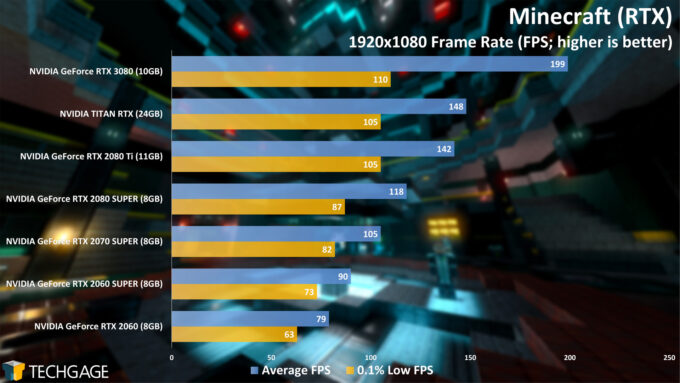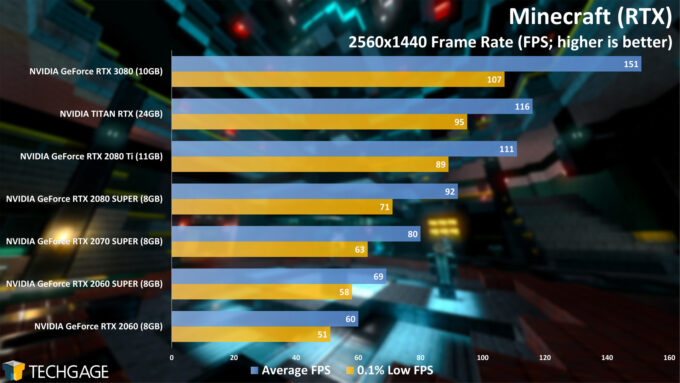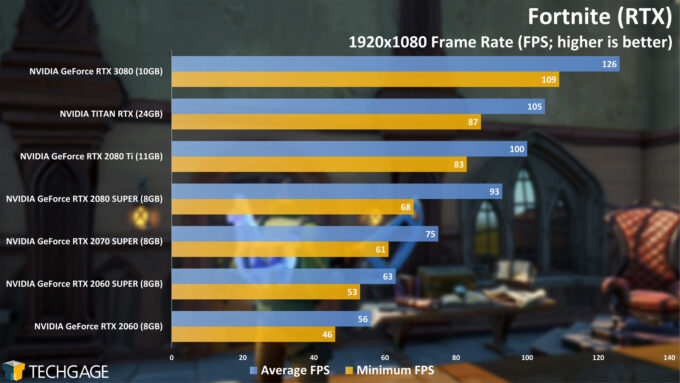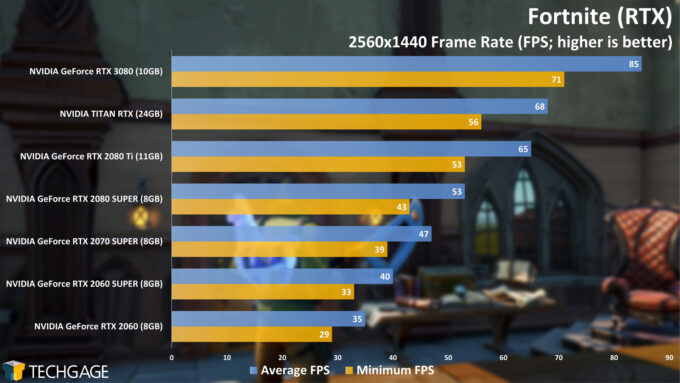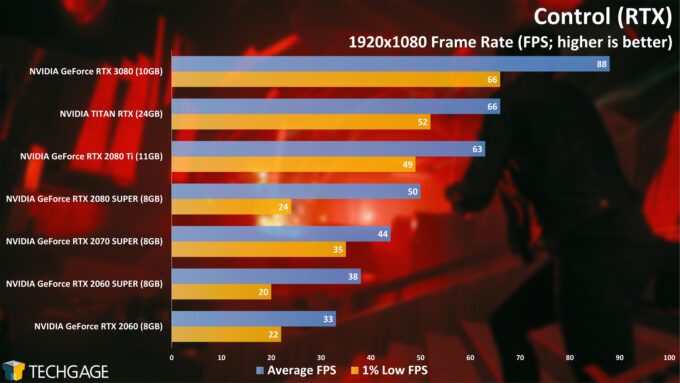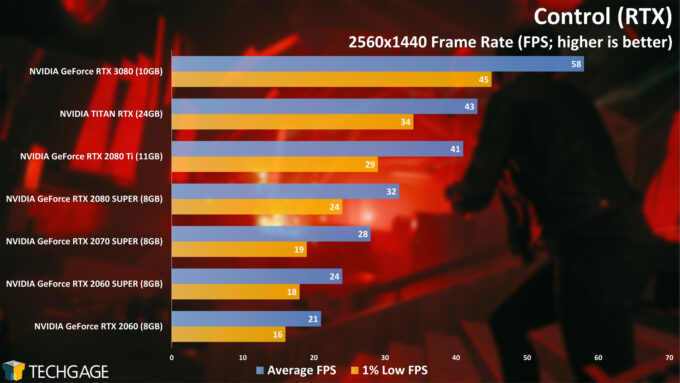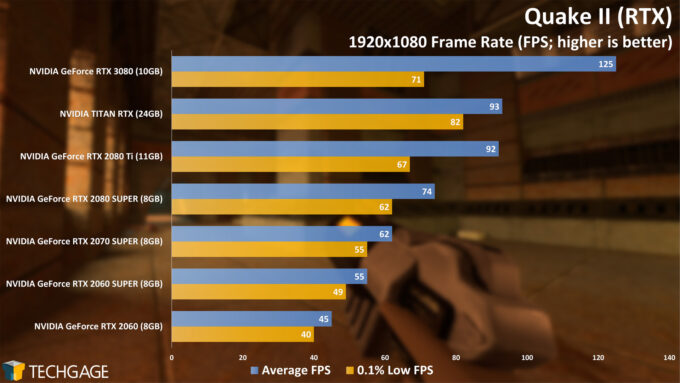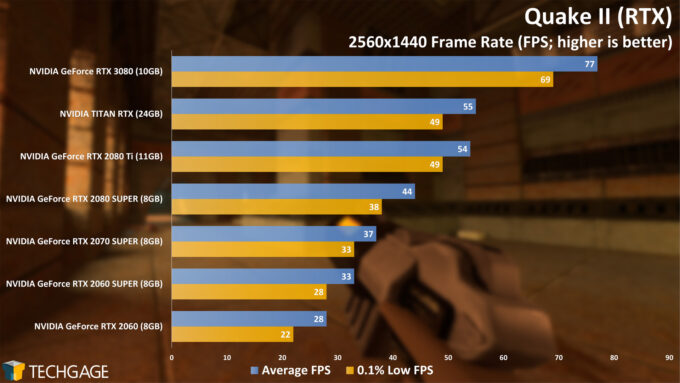- Qualcomm Launches Snapdragon 4 Gen 2 Mobile Platform
- AMD Launches Ryzen PRO 7000 Series Mobile & Desktop Platform
- Intel Launches Sleek Single-Slot Arc Pro A60 Workstation Graphics Card
- NVIDIA Announces Latest Ada Lovelace Additions: GeForce RTX 4060 Ti & RTX 4060
- Maxon Redshift With AMD Radeon GPU Rendering Support Now Available
NVIDIA GeForce RTX 3080 Gaming At 4K, Ultrawide & With RTX On
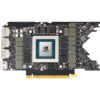
We were left impressed with our look at NVIDIA’s GeForce RTX 3080 in creative applications, so now it’s time to turn our attention to gaming! In this article, we’re going to take a look at 4K and ultrawide performance in a selection of current games, as well as explore some RTX titles, including Fortnite, Minecraft, and Control.
Page 2 – RTX Gaming: Minecraft, Fortnite, Control & Quake II
We have tackled RTX-specific game testing in the past, but haven’t made it a regular feature in our NVIDIA launch content. That could change, as more and more content is coming out that supports ray tracing or DLSS.
Because time was of the essence during the review period, we didn’t get to real-world DLSS testing outside of Minecraft, as it seems implied there. For a direct DLSS scaling test, we’ll be looking at 3DMark on the following page.
While we covered both 4K and ultrawide resolutions on the previous page, we’re largely sticking to 1080p and 1440p for our RTX testing here. This is due to the fact that ray tracing in general is a performance hog, which is the exact reason DLSS is typically meant to be used in conjunction to upscale the resolution to 4K with AI. So, the performance you see here could be further improved with DLSS at the higher resolutions. We plan to get more testing with DLSS done in time for the RTX 3070 launch.
Minecraft RTX
It’s clear that NVIDIA has optimized quite a bit for Minecraft RTX, because when it first became available, it seemed like a 2080 Ti would be required to even enjoy it. Things have clearly changed, since on our detailed benchmarking level (Portal Pioneers), even the lowbie RTX 2060 managed to deliver more than 60 FPS. There is no specific DLSS option to toggle in the game, but when in an RTX level, the top text on the screen implies that DLSS is being used, which would explain these healthy frame rates.
Fortnite RTX
Ahead of the RTX 3080’s launch, NVIDIA gave us access to an RTX-specific map in Fortnite that we could test out. It’s called Treasure Run, and it incorporates many RTX features, including impressive looking reflections. We envision a scenario where someone may be able to see someone else sneaking up on them because a mirror-like surfaces happens to be in view.
4K for Fortnite RTX isn’t really going to happen at least on any of the current stack. The upcoming RTX 3090 might fare better, especially thanks to its generous helping of memory (24GB). Still, at 1440p, the RTX 3080 still delivers great performance, breaching 80 FPS on the average, and 70 FPS minimum.
Control RTX
Of the four RTX titles covered here, Control is the one that requires the most graphics horsepower to deliver a smooth frame rate. Part of that might be because we chose to run with the highest detail settings, which includes reflections, diffused lighting, and contact shadows – while skipping DLSS. So, don’t take these results as gospel; you can tweak the settings a bit and get a nice boost pretty easily.
Quake II RTX
It might be old, but Quake II (RTX) is another game we want to spend more time with, because it’s one of the coolest mixtures of nostalgia and technology we’ve seen in a while. As with the other games on this page, this one requires a lot of RTX horsepower to deliver quality frame rates, but at 1440p, it’s still easy to break past the 60 FPS mark.
We’re going to take a look at synthetic benchmarks on the next page, including a fleet of RTX-specific tests from 3DMark that we’ve pretty much ignored up until this point.
Support our efforts! With ad revenue at an all-time low for written websites, we're relying more than ever on reader support to help us continue putting so much effort into this type of content. You can support us by becoming a Patron, or by using our Amazon shopping affiliate links listed through our articles. Thanks for your support!




